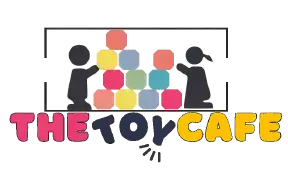Blog
The Evolution of Toys: From Traditional to Educational and Beyond

Toys have always been an integral part of childhood, serving as tools for entertainment, learning, and growth. Over time, they’ve transformed dramatically, mirroring societal changes, technological advancements, and shifting parenting philosophies. Let’s take a journey through the evolution of toys, exploring how they’ve gone from simple amusements to educational powerhouses and what the future holds.
1. Traditional Toys: Timeless Joys of Simplicity
The earliest toys were handmade, crafted from natural materials like wood, clay, and cloth. These toys, while simple, sparked imagination and creativity.
- Examples: Dolls, wooden animals, spinning tops, and marbles.
- Skills Developed: Basic motor skills, imaginative play, and social interaction.
Traditional toys reflected cultural values and were often designed to teach practical life skills, such as cooking or farming.
2. The Golden Age of Toys: Industrial Revolution and Mass Production
The 19th and early 20th centuries saw the industrial revolution change the toy industry. Mass production made toys more affordable and accessible.
- Examples: Teddy bears, wind-up toys, and train sets.
- Innovation: Mechanized toys introduced movement and interactivity.
This era marked the beginning of toys as a commercial industry, with iconic brands like LEGO and Barbie emerging.
3. The Rise of Technology: Electronic Toys and Video Games
With the advent of electronics in the late 20th century, toys became more sophisticated and interactive.
- Examples: Tamagotchis, Game Boys, and RC cars.
- Impact: These toys enhanced hand-eye coordination and introduced children to basic technological concepts.
Video games further revolutionized play, blending storytelling with immersive experiences, and paving the way for digital education tools.
4. Educational Toys: Learning While Playing
In recent decades, there’s been a significant shift toward toys that combine fun with learning. Parents increasingly value toys that nurture cognitive, emotional, and social skills.
- Examples: STEM kits, puzzles, and magnetic wall systems like The Toy Cafe’s Multipurpose Magnetic Wall Flex with Toy Set.
- Focus Areas:
- Early literacy and numeracy.
- Problem-solving and critical thinking.
- Creative expression through open-ended play.
These toys emphasize experiential learning, making education engaging and hands-on.
5. Sustainable and Eco-Friendly Toys: A Growing Trend
Modern parents are conscious of the environmental impact of plastic toys. This has led to a rise in:
- Wooden and biodegradable toys.
- Toys made from recycled materials.
- Minimalist designs that encourage imaginative play over excessive gadgetry.
6. The Future of Toys: Where Are We Headed?
As technology continues to evolve, so will toys. The future is likely to bring:
- AI-Integrated Toys: Toys that adapt to a child’s learning pace and style.
- Augmented Reality (AR) Games: Blending real-world play with digital interactivity.
- Smart Toys: Devices that connect with apps to offer personalized learning experiences.
- Multifunctional Toys: Products like The Toy Cafe’s Magnetic Wall Flex that merge creativity, learning, and home organization.
Why the Evolution Matters
The evolution of toys reflects humanity’s journey, from simple joys to complex learning systems. They’ve gone from mirroring cultural practices to being powerful tools that shape young minds and prepare them for the future.
Conclusion
As toys continue to evolve, they remain a critical part of childhood, blending the best of tradition, innovation, and education. Whether it’s a spinning top from centuries ago or a cutting-edge STEM toy, the essence of play remains the same: to inspire curiosity, creativity, and growth.
Explore how modern toys like The Multipurpose Magnetic Wall Flex with Toy Set can bring the best of education and fun to your child’s playtime.

Wynn09, Alright, I decided to try Wynn09 after seeing some ads, and things are nice here, easy to use. What are you waiting for? It’s here: wynn09
HH88bet, huh? Well, I’m always looking for new places to try my luck. Hope this one doesn’t disappoint. Bonus points if they have my favorite slots! Good luck to all! Give them a look: hh88bet
Yo, been trying out phpgames22 lately, and so far, so good! Nothing groundbreaking, but solid gameplay and fun to kill some time with. Worth a look! phpgames22
Just cruised through epiwin.info. Navigation’s pretty simple, nothing too fancy. Load times are decent. I’d say check out epiwin if you’re chillin’ and want something easy to get into.